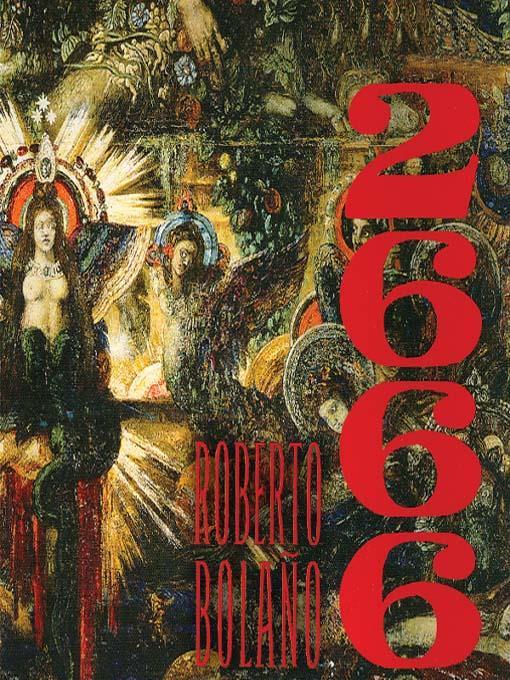
2666
کتاب های مرتبط
- اطلاعات
- نقد و بررسی
- دیدگاه کاربران
نقد و بررسی

Roberto Bola–o's surrealist magnum opus, set in Europe and South America, is divided into five books, each read here by a different narrator, each in his way extraordinary. John Lee is especially subtle with accents, Armando Duran brings his mostly Spanish-flavored section to vivid life, G. Valmont Thomas lends The Part About Fate a deadpan humor, and Grover Gardner gives the saga of the writer Benno von Archimboldi a compelling pace. Scott Brick takes a risk that might have worked but doesn't: presumably to convey the mythic and irrational nature of his part, about horrifying serial rape-murders in Mexico, he tries a singsong narration as if he were reciting an epic poem. A smart idea, but tiresome to listen to. His characters' voices are outstanding, though. B.G. (c) AudioFile 2009, Portland, Maine

Starred review from July 28, 2008
Last year's The Savage Detectives
by the late Chilean-Mexican novelist Bolaño (1953–2003) garnered extraordinary sales and critical plaudits for a complex novel in translation, and quickly became the object of a literary cult. This brilliant behemoth is grander in scope, ambition and sheer page count, and translator Wimmer has again done a masterful job.
The novel is divided into five parts (Bolaño originally imagined it being published as five books) and begins with the adventures and love affairs of a small group of scholars dedicated to the work of Benno von Archimboldi, a reclusive German novelist. They trace the writer to the Mexican border town of Santa Teresa (read: Juarez), but there the trail runs dry, and it isn't until the final section that readers learn about Benno and why he went to Santa Teresa. The heart of the novel comes in the three middle parts: in “The Part About Amalfitano,” a professor from Spain moves to Santa Teresa with his beautiful daughter, Rosa, and begins to hear voices. “The Part About Fate,” the novel's weakest section, concerns Quincy “Fate” Williams, a black American reporter who is sent to Santa Teresa to cover a prizefight and ends up rescuing Rosa from her gun-toting ex-boyfriend. “The Part About the Crimes,” the longest and most haunting section, operates on a number of levels: it is a tormented catalogue of women murdered and raped in Santa Teresa; a panorama of the power system that is either covering up for the real criminals with its implausible story that the crimes were all connected to a German national, or too incompetent to find them (or maybe both); and it is a collection of the stories of journalists, cops, murderers, vengeful husbands, prisoners and tourists, among others, presided over by an old woman seer.
It is safe to predict that no novel this year will have as powerful an effect on the reader as this one.

























دیدگاه کاربران